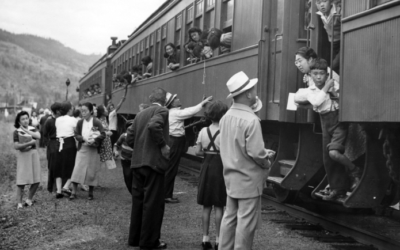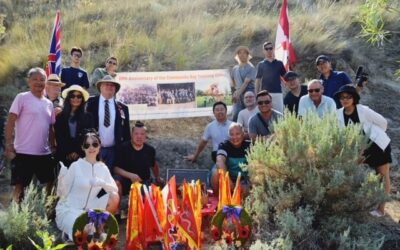A veteran sailor and his young, inexperienced crew members fought to protect vital supply convoys from being destroyed by German submarines. Traversing the North Atlantic, they faced many challenges: harsh weather, enemy attacks, fragile equipment and living in tight quarters. Guided by Commander King’s cunning tactics, the crew of both the HMCS Oakville and the HMCS Swansea sunk four U-boats during WWII, saving lives and vital supplies from destruction at sea.
Commander Clarence Aubrey King DSO DSC 1886 – 1964
From the time he was 13 years old, in 1899, until the end of WWII, British-born Clarence King spent most of his life at sea. As the captain of a Q-ship (a small warship disguised as merchant ship) he sunk one U-boat in 1918, and possibly two others. As a result, he was awarded the Distinguished Service Cross (DSC). After WWI, King settled in Canada, eventually finding his way to Oliver, BC.
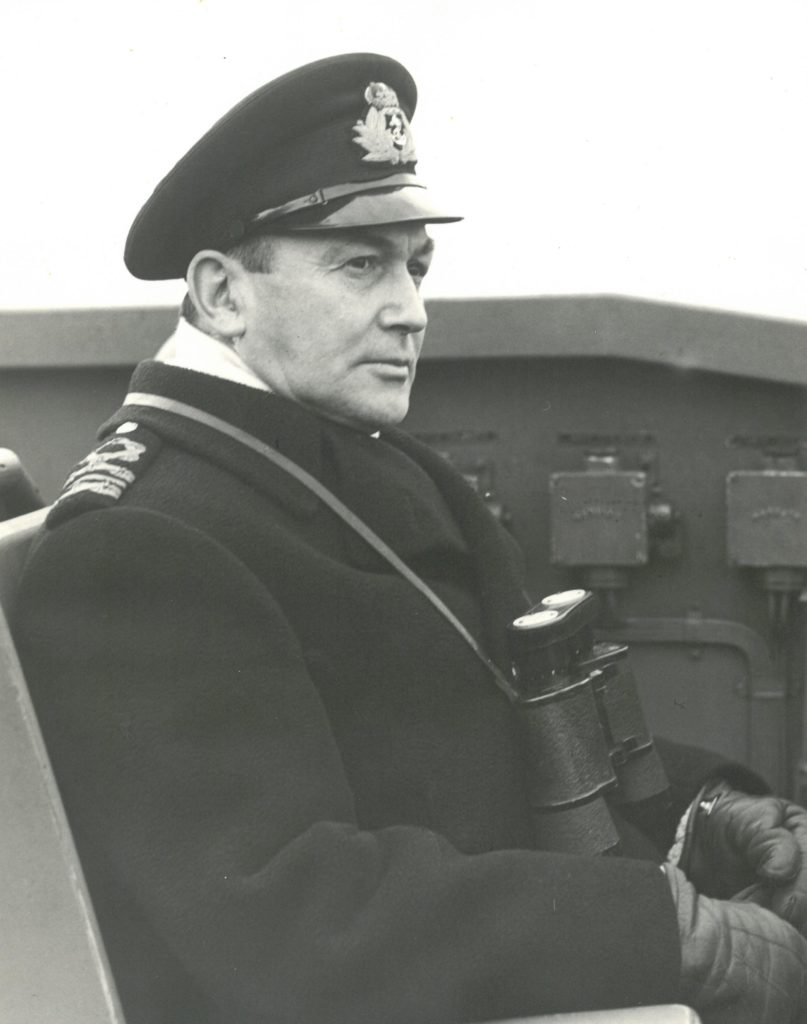
[OMM-P-1231]
When WWII broke out, King was a 53 years old veteran naval officer in the Royal Naval Reserve. He joined the Royal Canadian Naval Reserve to serve at sea again. He commanded six warships and destroyed four enemy submarines, which earned him his second DSC and the Distinguished Service Order. King commanded the corvettes HMCS Saskatoon and HMCS Oakville, the minesweeper HMCS Nipigon, and the frigates HMCS Swansea, HMCS Prince Rupert and HMCS Runnymede. At the end of the war, King returned to his family and orchard.
He was a valued community member, serving on hospital, school, library and church boards in Oliver and Osoyoos. Commander King died in Osoyoos on February 9, 1964 at 77.
HMCS Oakville and U-94
Somewhere between Cuba and Haiti around midnight on August 28, 1942 the HMCS Oakville was in the Caribbean escorting a convoy with three other warships when the command centre signalled ‘Action Stations!’ A patrol plane dropped a flare to mark the area where a submarine was spotted. Commander King raced to drop charges onto the suspected location of the sub.
RCN veteran of HMCS Oakville and museum volunteer recalls:
“My station was on the fo’c’sle (forecastle) alongside the 4” gun platform as ammunition supply. I took the shells and bundles of cordite out of leather sacks that were hoisted up from two decks below. I then placed them on the platform for the loaders. Many times I got soaked as the seas came over the bow but this night the sea was calm and a bright moon shone and I was able to observe all the action. We were at full speed and as we crossed over our [sonar] contact we dropped a pattern of depth charges. Suddenly, dead ahead, the sub surfaced and leveled off. Our gun crew opened fire taking away the sub’s deck gun.”
King began ramming the sub. By this time, most of the sub’s crew were in the water.
“We were up to speed by now and the Captain attempted to ram. The sub, however, was too fast and we sailed across her stern. Swinging around, we rammed her above the hydroplanes. We sailed right through them on our third attempt to ram the sub. Unknown to us, their hydroplanes had punched a hole in the #2 boiler room. I could see down her conning tower where a couple of crew were crouching. The sub was sinking and we were drifting apart.”
The sonar equipment under the ship was damaged. As they passed the sub down the starboard side, two of King’s crew, Sub Lt. Lawrence and Stoker Petty Officer Powell, jumped onto its deck. Lt. Lawrence tried to recover code books and machines from inside, but the control room was flooded.
“Our lifeboat picked up four survivors and our men as the sub’s captain swam to our ship.”
The USS Lea collected twenty-one others. Meanwhile, other U-boats were attacking the convoy. The convoy lost five ships that night. The HMCS Oakville shored up the bulkheads in #1 boiler room and started the engines. They headed back to Guantanamo Bay, their Caribbean base, patched the hole in the hull, and headed to Halifax for a two-week leave.
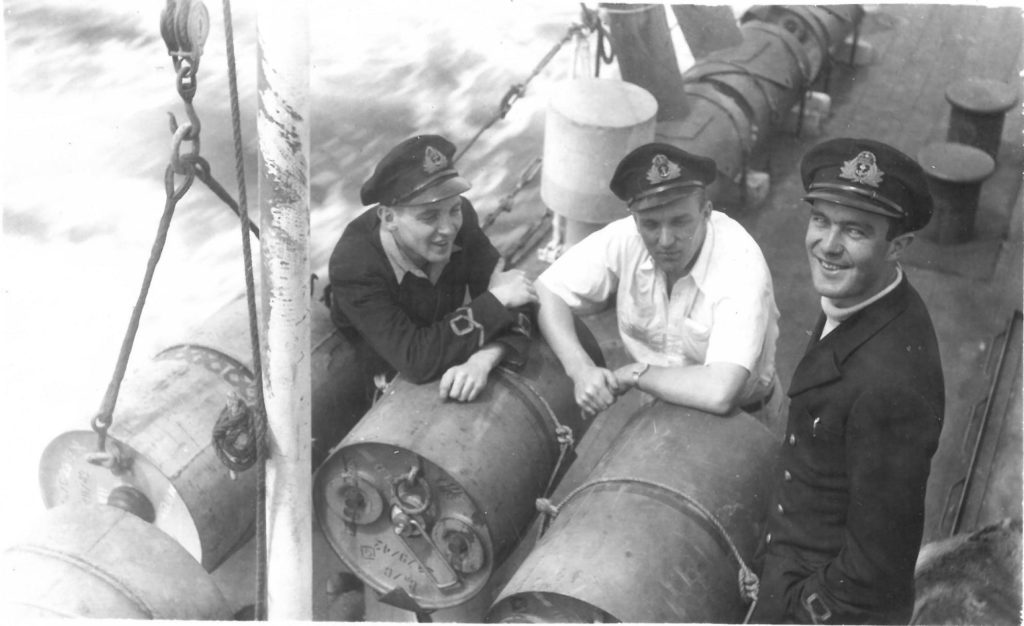
[OMM-P-1174]
HMCS Swansea and U-845
Successful detection and destruction of enemy U-boats was usually a collaborative effort of convoy escorts, Allied ships and aircraft. Such was the case on March 10, 1944, when several Canadian and British ships collaborated to detect, attack and eventually sink U-845. Slow Convoy 154 (consisting of 40 ships) was under the close protection of Escort Group C-1, when three of the eight ships were called away. Nearby ships, including the HMCS Swansea, moved towards the convoy to provide added security, while the remaining ships of C-1 searched for U- boats.
A C-1 sailor spotted U-845 eight miles ahead on the surface recharging its batteries. It submerged within minutes. The escort group used their underwater sonar systems to coordinate an attack with depth charges. U-845 was a wily opponent, alternating course and staying deep until nightfall. The Swansea and four other ships initiated a creeping attack in the moonlight. Suddenly, the U-boat surfaced in a swirl of foamy water. The sub tried to outrun the ships, but the Swansea and cohorts opened fire with their 4” and 4.7” guns. The U-boat twisted and turned while firing back. Crippled by multiple hits and a shallow depth charge explosion, the sub sank. None of the ships were hit by cross-fire or by the U-boat’s guns. This was HMCS Swansea’s first kill under King’s command.
King’s Crew
“…we were just a band of men who had joined up to fight a war and not to make a career out of it. I guess by now, you realize we loved Captain King.”
Reginald Adams, Able Seaman, HMCS Oakville.
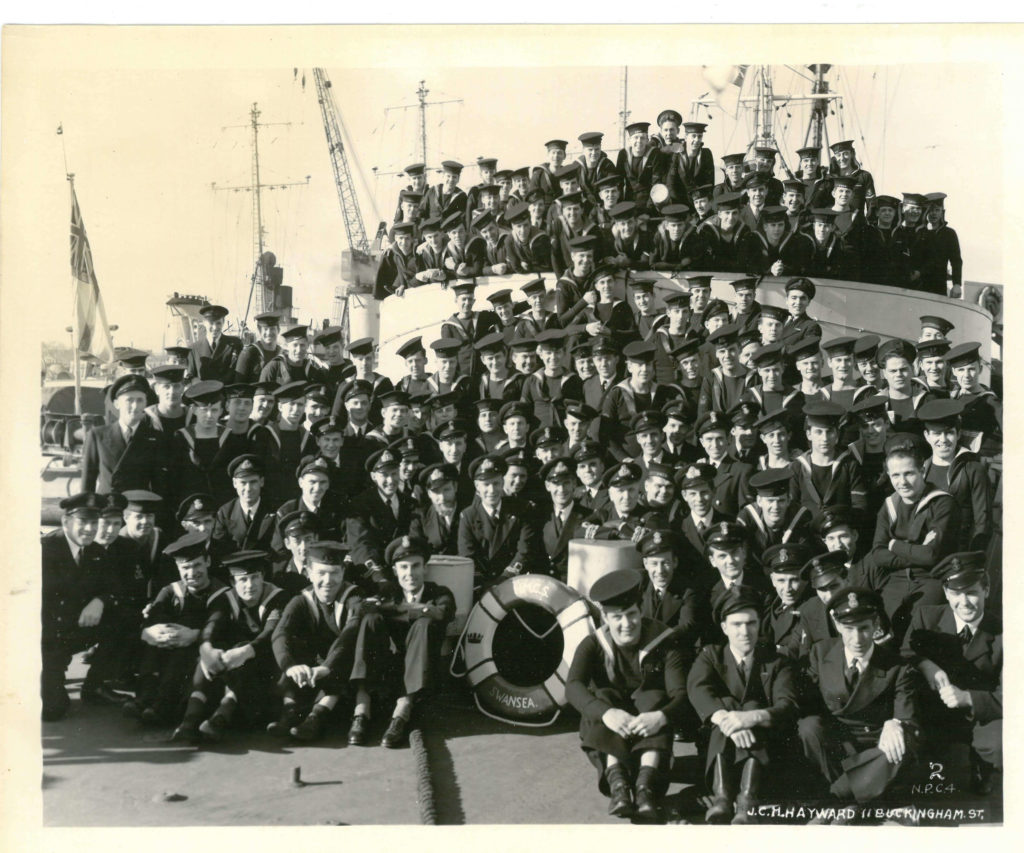
[OMM-P-1230]
Commander King was tasked with moulding 130 young, under-trained men into sailors. He transformed them into shepherds for the cargo ships that sailed through the U-boat-infested waters between North American ports and the isles of the United Kingdom. Together, the men mastered the art of anti-submarine warfare with radio signal detection and sonar devices, explosives and wily tactics. They accomplished all of this while crowded aboard warships battered by Atlantic storms.
Digital reproductions of historic photographs are available and they make wonderful souvenirs and gifts! Ask us about the many options for ordering digital reproductions.

